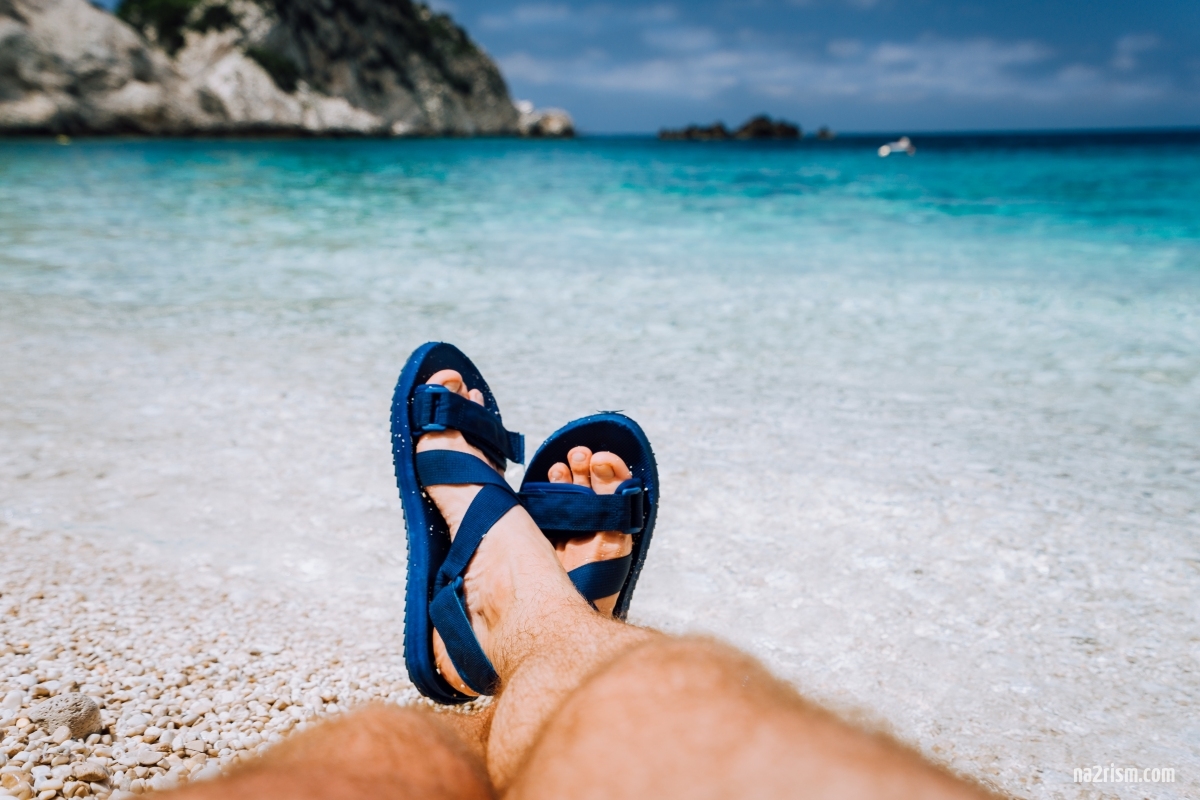Naturism, also known as nudism, is a lifestyle that promotes the practice of social nudity, advocating for the freedom and acceptance of the human body in its natural state. While the essence of naturism revolves around shedding clothing, one might wonder why naturists still wear shoes. This seemingly paradoxical practice actually stems from a blend of practicality, safety, and health considerations. Additionally, it’s worth noting that naturists often don sun-protective hats alongside their footwear.
The Practicality of Shoes in Naturism
First and foremost, the primary reason naturists wear shoes is practical. While the idea of being barefoot may seem appealing, the environments in which naturists often find themselves can be unpredictable and hazardous to unprotected feet. Beaches, forests, and hiking trails are popular naturist destinations, and these natural settings are often fraught with potential dangers. Sharp rocks, thorny plants, hot sand, and broken glass are just a few of the hazards that can be encountered. Shoes provide a necessary layer of protection against these elements, ensuring that naturists can enjoy their surroundings without fear of injury.
In addition to providing protection, shoes also offer comfort. Many naturist resorts and parks feature extensive grounds that require a fair amount of walking. Traversing these areas barefoot can quickly become uncomfortable, especially on rough or uneven terrain. Wearing shoes allows naturists to move freely and comfortably, enhancing their overall experience. The practicality of shoes extends to their role in preventing infections and other foot-related health issues. Cuts and abrasions from walking barefoot can lead to infections, particularly in outdoor environments where bacteria and other pathogens are present. By wearing shoes, naturists minimize the risk of such injuries and maintain better foot hygiene.
Health and Safety Considerations
Health and safety are paramount in the naturist community. The emphasis on protecting the feet is aligned with the broader principle of caring for one’s body. Naturists believe in the holistic well-being of the individual, which includes taking steps to prevent harm. Shoes act as a simple yet effective means of safeguarding against common foot injuries that could otherwise detract from the naturist experience.
Moreover, certain environments necessitate additional protection. For instance, naturist hiking trails often lead through varied terrain, including rocky paths and dense underbrush. In such settings, sturdy footwear is essential not only for protection but also for stability. Proper shoes provide traction and support, reducing the risk of slips and falls. This is particularly important for older naturists or those with mobility issues, ensuring that everyone can participate in naturist activities safely.
The Role of Sun-Protective Hats
Beyond footwear, sun-protective hats are another common accessory among naturists. The importance of sun protection cannot be overstated, especially in outdoor settings where naturist activities typically occur. Prolonged exposure to the sun’s ultraviolet (UV) rays can lead to sunburn, skin damage, and an increased risk of skin cancer. While sunscreen is an essential tool in the fight against UV exposure, hats provide an additional layer of defense.
Hats with wide brims are particularly effective, as they shade the face, neck, and shoulders—areas that are especially vulnerable to sunburn. By wearing sun-protective hats, naturists can enjoy extended periods outdoors while minimizing their risk of sun-related health issues. This practice is a testament to the naturist philosophy of respecting and caring for one’s body.
Balancing Freedom and Practicality
Naturism is fundamentally about embracing the freedom and natural state of the human body. However, this philosophy does not equate to disregarding practical considerations. The choice to wear shoes and sun-protective hats reflects a balance between the ideals of naturism and the realities of the natural world. By adopting these protective measures, naturists can fully immerse themselves in nature while ensuring their comfort and safety.
In essence, the wearing of shoes and hats within the naturist community is a pragmatic response to the demands of outdoor environments. It allows naturists to engage more freely with nature, knowing that they are protected against common hazards. This thoughtful approach underscores the naturist commitment to holistic well-being, where freedom is harmonized with responsibility and care for the self.
The naturist lifestyle celebrates the beauty and freedom of the human body in its natural state. Yet, this celebration is accompanied by a mindful approach to safety and health. Shoes and sun-protective hats are not contradictions but complements to the naturist philosophy, enhancing the experience by providing necessary protection. Through this balance of freedom and practicality, naturists can continue to explore and enjoy the natural world fully and safely.

